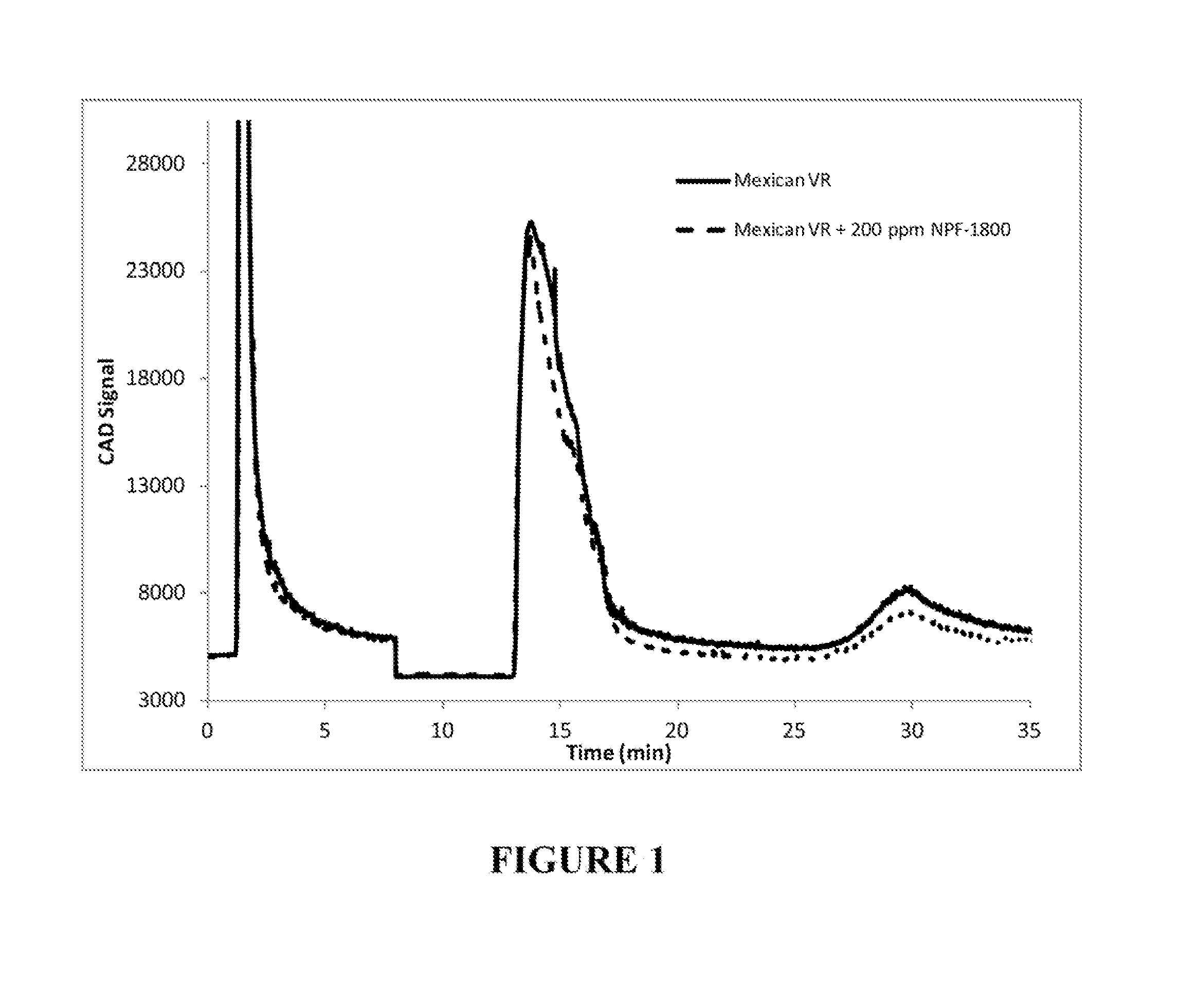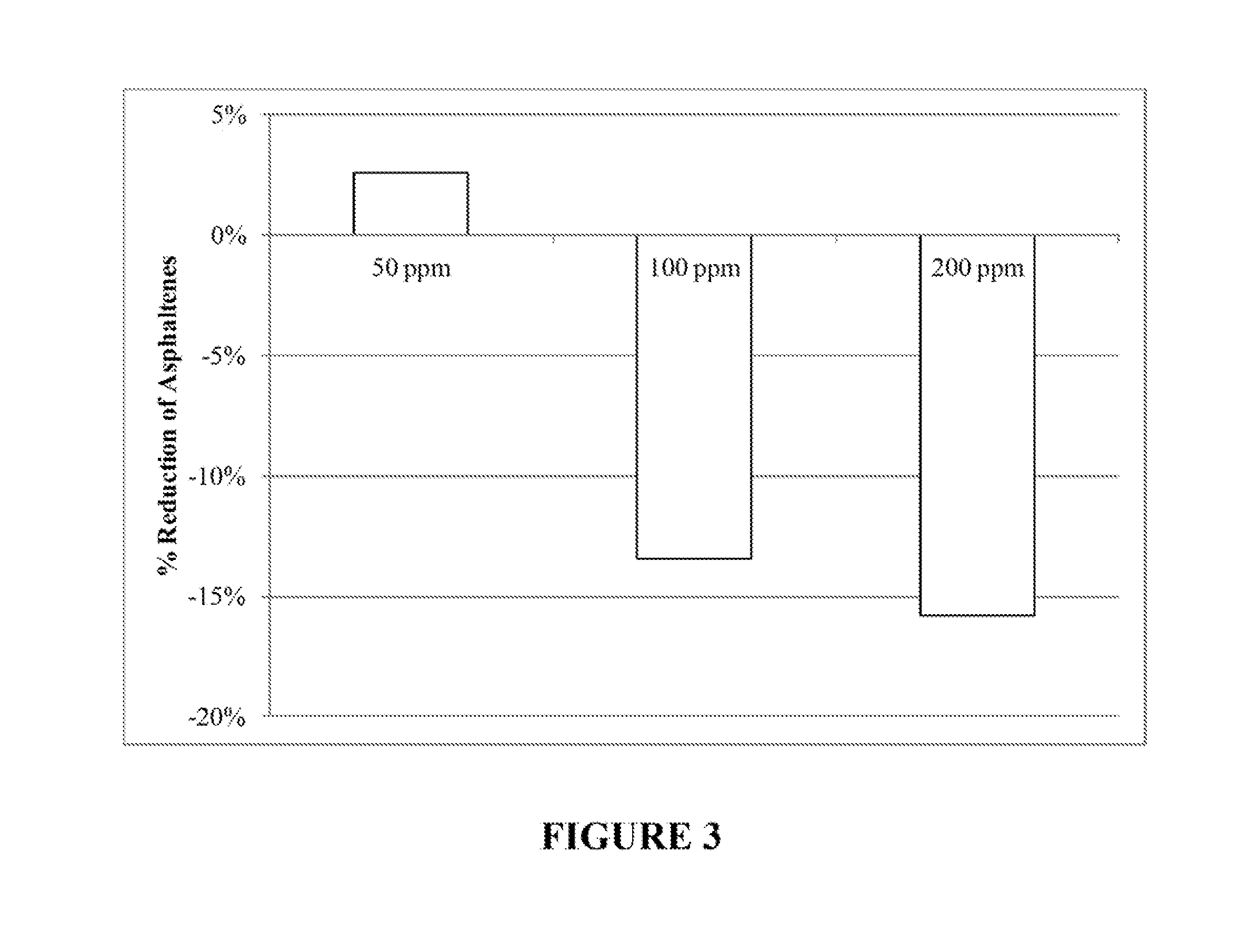Method for determining the effectiveness of asphaltene dispersant additives for inhibiting or preventing asphaltene precipitation in a hydrocarbon-containing material subjected to elevated temperature and pressure conditions
a technology of asphaltene dispersant and additive, which is applied in the direction of working up pitch/asphalt/bitumen, selective extraction, borehole/well accessories, etc., can solve the problems of increasing the tendency of asphaltenes to agglomerate into larger particles, reducing and limiting the yield of residue conversion, etc., to achieve simple, cost-efficient and repeatable, and improve the flow of hydrocarbon-containing feedstock , the effect of reducing fouling
- Summary
- Abstract
- Description
- Claims
- Application Information
AI Technical Summary
Benefits of technology
Problems solved by technology
Method used
Image
Examples
example 1
[0190]Two solutions of a heavy crude oil vacuum residue from Mexico (API (60 / 60)=1, and 96% wt. of 1000° F.) with and without an asphaltene dispersant additive (200 ppm of nonylphenol formaldehyde with a mol. weight of 1800 g / mol), were prepared by dissolving 0.1000 g of the heavy crude oil in 10 mL of methylene chloride. A stainless steel column packed with poly(tetrafluoroethylene) (PTFE) were placed in a Polaratherm™ Series 9000 liquid chromatograph oven commercially available from Selerity Technologies (Salt Lake City, Utah), and heated to 195° C. and pressurized to 580 psi (40 bar). The solution without an asphaltene dispersant additive was then injected into the stainless steel column using a heptane mobile phase at a flow rate of 2 mL / min. The maltenes (heptane solubles) eluted from the column as the first peak around 2 minutes after the injection while precipitated asphaltenes at this temperature remained inside the column in the PTFE.
[0191]Next, the oven was cooled down to ...
example 2
Determining the Effectiveness of Asphaltene Dispersant Additives in a Mexican Vacuum Residue
[0198]In FIG. 2, the percentages of reduction of asphaltene contents with respect to the case without asphaltene dispersant additive are presented for nonylphenol formaldehyde and two commercial asphaltene dispersant additives at 195° C. As can be seen, this method can be used to determining the effectiveness of one or more asphaltene dispersant additives for inhibiting or preventing asphaltene precipitation of a vacuum residue.
example 3
Determining the Optimum Concentration of an Asphaltene Dispersant Additives a Venezuelan Vacuum Residue
[0199]In FIG. 3, the percentages of reduction of asphaltene contents with respect to the case without asphaltene dispersant additive are presented for a Venezuelan vacuum residue (API (60 / 60)=2.7, and 98% wt. of 1000+° F.) at 195° C. using a commercial asphaltene dispersant additive 3. As can be seen, this method can be used to determining the optimum concentration of a asphaltene dispersant additives for inhibiting or preventing asphaltene precipitation of a vacuum residue.
PUM
 Login to View More
Login to View More Abstract
Description
Claims
Application Information
 Login to View More
Login to View More - R&D
- Intellectual Property
- Life Sciences
- Materials
- Tech Scout
- Unparalleled Data Quality
- Higher Quality Content
- 60% Fewer Hallucinations
Browse by: Latest US Patents, China's latest patents, Technical Efficacy Thesaurus, Application Domain, Technology Topic, Popular Technical Reports.
© 2025 PatSnap. All rights reserved.Legal|Privacy policy|Modern Slavery Act Transparency Statement|Sitemap|About US| Contact US: help@patsnap.com



